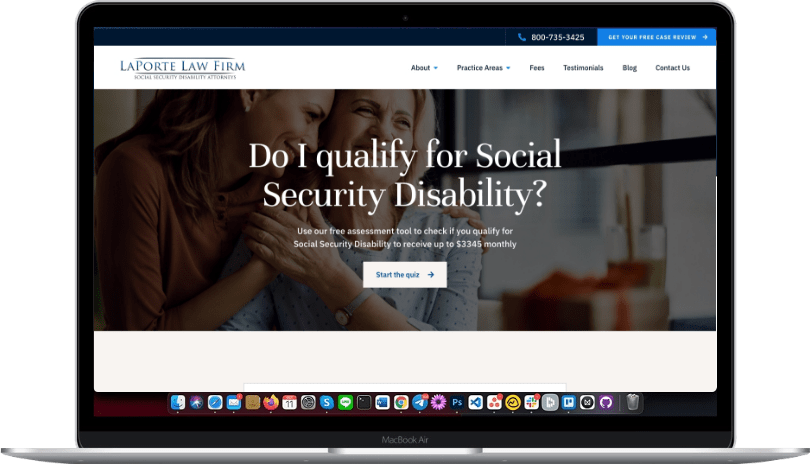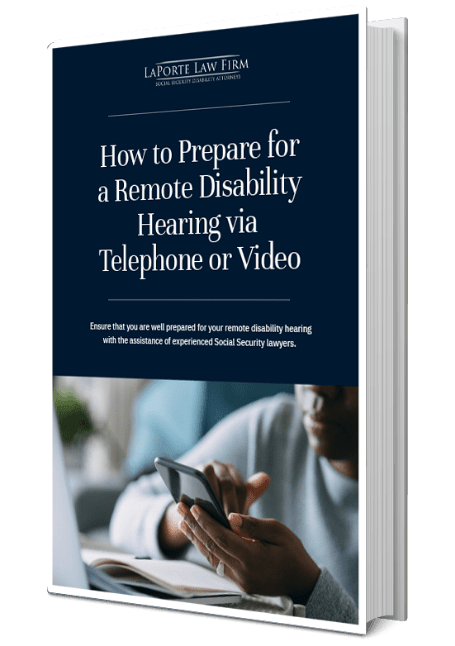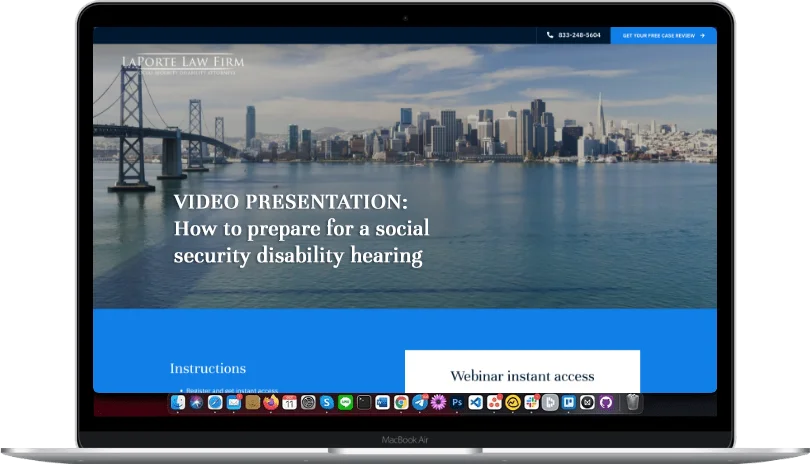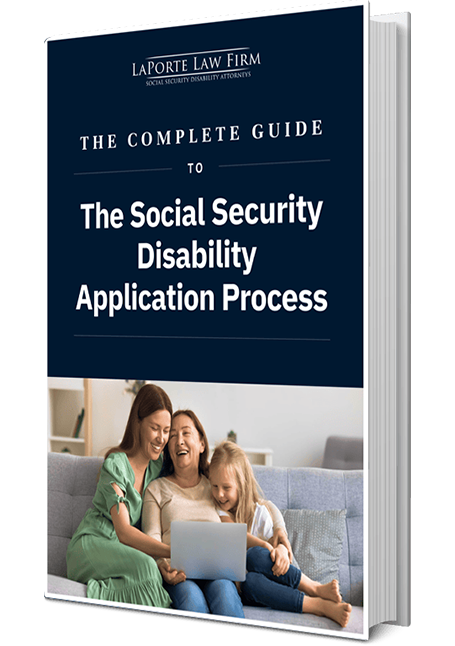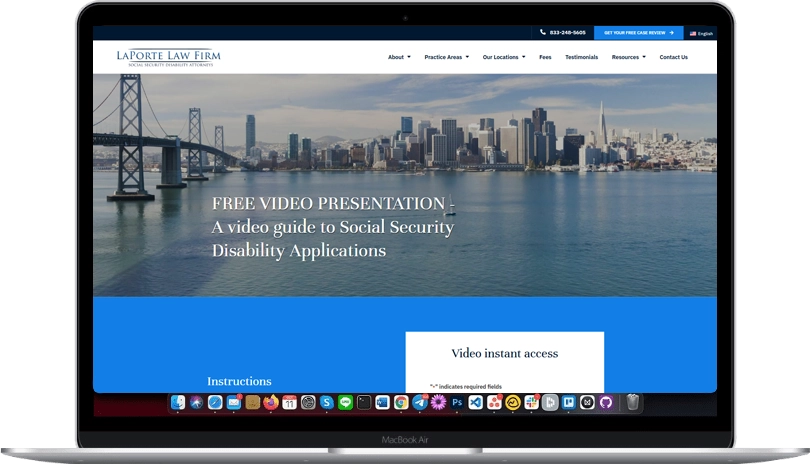
Disability benefits serve as a financial lifeline for individuals who are unable to earn a living due to a disability. By offering a steady income during difficult times, these benefits help alleviate financial stress and ensure that one’s standard of living is maintained even in the event of job loss.
In this article, we’ll delve deeper into the historical context of disability benefits and the purpose of disability income benefits, exploring how they function and why they are an integral part of a comprehensive financial plan.
Historical and Social Context of Disability Income Benefits
Over the years, shifts in social values and government policies have played a key role in shaping disability benefits in the United States. As our understanding of disability has grown, so has the awareness that public support systems are essential for those facing serious, long-term health challenges. These changes helped pave the way for programs that offer financial assistance to individuals who can no longer work due to disability.
The Social Security Act and the foundation of public disability benefits
The origins of Social Security disability benefits in the US can be traced back to the Social Security Act of 1935, a key piece of New Deal legislation signed by President Franklin D. Roosevelt in response to the Great Depression. While the Act was primarily focused on retirement benefits and did not initially provide benefits for disabled individuals, it laid the groundwork for future programs by establishing the federal government’s role in ensuring that the elderly and disabled do not wind up homeless, and have their basic needs met when they are too elderly or sick to provide for themselves.
The Act introduced a contributory system funded by payroll taxes (FICA), primarily aimed at providing retirement and unemployment benefits. This framework later supported the development of disability insurance by establishing the principle that workers who contribute to the system should receive support if they are unable to work due to disability.
When the Social Security Act was signed into law in 1935, the United States was in the middle of the crisis of the Great Depression. The stock market had crashed in 1929, which led to billions of dollars in lost investments and a 25% unemployment rate. Amongst this turmoil, as banks were failing and a majority of elderly people could not meet their basic needs, there were calls for reforms to the system and the development of social insurance programs to improve the lives of struggling Americans. According to President Roosevelt:
“We must protect the crushable elements at the base of our present industrial structure…it is abnormal for any industry to throw back upon the community the human wreckage due to its wear and tear, and the hazards of sickness, accident, invalidism, involuntary unemployment, and old age should be provided for through insurance…We pledge ourselves to work unceasingly in state and nation for…[the] protection of home life against the hazards of sickness, irregular employment, and old age through the adoption of a system of social insurance adapted to American use.”
The first major step toward disability coverage came in 1956, when Congress amended the Social Security Act to create Social Security Disability Insurance (SSDI). SSDI provides income protection to workers who become disabled before retirement age and have paid enough federal income taxes to be insured for the program. In 1972, Congress further expanded disability coverage with the creation of Supplemental Security Income (SSI), a needs-based program for aged, blind, and disabled individuals who lack a sufficient work record. Unlike SSDI, SSI is funded through general tax revenues and not payroll contributions, and it provides basic financial support to people with disabilities who have little or no income and minimal resources.
Social Security has evolved from a modest program into a cornerstone of financial security for millions of Americans. Today, about one in five people in the US receive Social Security benefits, and over 90% of workers are in jobs covered by the system.
Disability benefits as a safety net for workers
Disability income, both public and private, serves as a crucial financial safety net by providing partial income replacement to individuals who are unable to work due to illness or injury. Public programs such as SSDI and SSI offer essential support to eligible individuals, while private disability insurance, often provided through employers or purchased individually, adds a layer of protection. Together, these programs help prevent sudden income loss from leading to financial hardship or poverty.
The broader societal purpose of disability income is to ensure that workers who experience unforeseen health issues are not left without means of support, promoting economic stability and reducing the burden on families and communities.
Understanding Social Security Disability Benefits
As discussed, Social Security disability benefits are federal payments provided to individuals who are unable to engage in substantial gainful activity (SGA) due to a medically determinable physical or mental impairment that is expected to last at least 12 months or result in death. Under 42 U.S. Code § 423(d), the Social Security Act defines disability as:
“The inability to engage in any substantial gainful activity by reason of any medically determinable physical or mental impairment which can be expected to result in death or which has lasted or can be expected to last for a continuous period of not less than 12 months.”
This definition applies to SSDI, which requires a sufficient work history and contributions to the Social Security system. A similar standard is used for SSI, though eligibility for this program is based on financial need rather than work history.
Medical criteria and documentation
To qualify for Social Security disability benefits, you must provide medical documentation showing that you have a severe physical or mental impairment that prevents you from working and is expected to last at least 12 months or result in death. This is proven through your medical records, including treatment notes created each time you visit your doctor, results from diagnostic tests such as MRIs or blood work, and records of ongoing treatment.
In addition, statements from your physicians that include functional assessments, describing how your condition limits your ability to perform basic work activities, can further support your claim. All of this evidence together helps demonstrate the extent and duration of your disability.
Employment and earnings requirements
Eligibility for SSDI is not based solely on medical condition; it also depends on your work history, specifically your accumulation of work credits. Work credits are earned through employment in jobs covered by Social Security, with workers earning up to four credits per year based on their annual income. In 2025, one work credit is earned for every $1,810 in wages or self-employment income, up to the maximum of four credits.
To qualify for SSDI, you must meet insured status requirements, which include both “recent work” and “duration of work” tests. Generally, most adults need to have earned 40 credits, with 20 of those earned in the last 10 years before becoming disabled. Younger workers may qualify with fewer credits, depending on their age at the time of disability. This insured status ensures that SSDI benefits are available only to individuals who have made sufficient contributions to the Social Security system through payroll taxes.
SSI is different from SSDI because it does not require you to have a work history or be “insured” through work credits. You can qualify for SSI even if you’ve never worked, as long as you are aged, blind, or disabled and meet strict financial requirements. SSI is a means-tested program, meaning your eligibility is based on your income and assets. To qualify, your countable income including wages, Social Security benefits, or help from others must fall below a certain limit set by the Social Security Administration (SSA).
Additionally, you must have limited resources, typically no more than $2,000 in assets for an individual or $3,000 for a couple. Certain assets, like your primary home and one vehicle, are excluded from this limit.
Waiting periods for benefits
For SSDI, there is a mandatory five-month waiting period before you can begin receiving benefits. This means that after the SSA determines the date your disability began, your cash benefits will not start until the sixth full month of disability. For example, if your disability is found to have started in January, your benefits would begin in June.
SSI does not have a waiting period like SSDI. Instead, SSI benefits can begin as early as the first full month after you apply, provided you meet all the eligibility requirements during that time. In some cases, benefits may be paid starting from the application date. Because SSI is a needs-based program designed to assist individuals with limited income and resources, it is intended to provide faster financial relief compared to SSDI.
Differences from Other Insurance Types
Whether offered by the government or a private insurer, disability benefits are designed to support people who can’t work due to health issues. But the details vary, and it’s important to understand how Social Security disability compares to other types of coverage.
Short-term disability benefits
Some states offer their own public short-term disability insurance (SDI) programs. These provide temporary wage replacement to workers who are unable to work due to a non-work-related illness or injury, or pregnancy. In California, specifically, eligible workers can receive SDI benefits for up to 52 weeks (one year), depending on the duration of their disability and medical certification.
California’s SDI program is different from federal Social Security disability benefits in several important ways. Most notably, Social Security disability requires that your condition is expected to last at least 12 months or result in death, and you must demonstrate that you are unable to perform any full-time work, not just your usual job. In contrast, California’s SDI only requires that you are temporarily unable to do your regular or customary work, making it more accessible for short-term conditions.
Private long-term disability benefits
Long-term disability (LTD) benefits are a type of private disability insurance often provided through employers or purchased individually. LTD insurance offers income replacement if you become disabled and are unable to work for an extended period, typically starting after short-term disability benefits end (usually after 3–6 months). Unlike public programs, LTD plans are governed by the terms of the individual policy or employer plan.
The disability standard for LTD benefits can vary depending on the policy, but generally falls into two categories: own-occupation or any-occupation. Under an own-occupation standard, you are considered disabled if you cannot perform the duties of your specific job or profession, even if you could work in another capacity. Under an any-occupation standard, you must be unable to perform the duties of any job for which you are reasonably suited by education, training, or experience.
LTD policies often require ongoing proof of disability through medical documentation and may have specific provisions regarding the length of benefits and definitions of disability.
Moreover, LTD insurance differs from Social Security disability benefits in both coverage and disability standards. While LTD policies vary, SSDI uses a specific standard that requires you to be unable to perform not only your past work but also any other work that exists in significant numbers in the national economy. When determining whether you can perform other work, the SSA considers factors such as your age, education, and work experience to assess your ability to adjust to different types of jobs. This broader assessment often makes the Social Security disability standard more stringent than many LTD policies, which may focus primarily on your ability to perform your own occupation or similar work.
Workers’ compensation
Workers’ compensation benefits are payments and services provided to employees who get injured or become sick because of their job. These benefits help cover medical expenses, such as doctor visits and treatments, and provide money to replace part of the wages lost while the worker is unable to work.
Workers’ comp is designed to protect workers by giving them financial support and medical care when injuries happen at work or because of work-related activities. It also protects employers by limiting their liability when employees are hurt on the job, as workers’ compensation is usually the exclusive way for injured workers to receive benefits related to workplace injuries or illnesses. This means that if you are hurt or become ill due to your employment, workers’ comp can provide medical care and wage replacement.
In contrast, disability income policies — both public programs such as Social Security disability and private insurance such as long-term disability — cover disabilities caused by both work-related and non-work-related injuries or illnesses. This broader coverage means disability income benefits can protect you if you become disabled due to health conditions or accidents that happen outside of work, offering a wider safety net beyond what workers’ compensation provides.
Financial Impact of Disability Income Benefits
Dealing with a disability is hard enough without the added stress of lost income. Disability benefits are designed to help ease that burden by ensuring individuals have the resources they need to cover daily living expenses during a difficult time.
Protecting income and living standards
Social Security disability benefits play a vital role in helping disabled individuals cover basic living expenses, such as housing, food, and debt payments. By replacing a portion of lost wages, Social Security disability helps safeguard a person’s standard of living, this financial support not only promotes stability for disabled individuals but also reduces the risk of homelessness, hunger, and overwhelming debt, contributing to overall well-being and dignity.
Protecting health insurance coverage
Most people become eligible for Medicare at age 65, regardless of their income or health status. However, if you are approved for SSDI, you can qualify for Medicare before age 65, but only after a 24-month waiting period. This waiting period begins the month you start receiving SSDI cash benefits.
Once the 24 months have passed, you are automatically enrolled in Medicare, which includes coverage for hospital care (Part A) and optional medical services such as doctor visits and outpatient care (Part B). This early access to Medicare is a key benefit for people with long-term disabilities who need continued medical treatment.
Note that this early Medicare eligibility does not apply to SSI recipients.
Role in a comprehensive financial plan
Disability income coverage is a key part of an overall risk-management strategy, providing financial protection in case you become unable to work due to illness or injury. Just like health, life, and auto insurance protect against specific risks, disability insurance helps ensure that your income — which is often your most valuable asset — is protected. It complements other financial tools such as savings, emergency funds, and retirement planning by helping you maintain your standard of living and continue meeting financial obligations if your earning ability is interrupted. When combined with thoughtful budgeting and long-term planning, disability income coverage helps create a more stable and resilient financial foundation.
Ultimately, disability insurance benefits exist to vital support system for individuals who, through no fault of their own, can no longer earn a living due to a serious disability. These benefits help ensure that people aren’t pushed into poverty simply because they are unable to work. By offering financial support, disability benefits enable individuals to maintain access to necessities such as food, medical care, and housing, preserving dignity and stability when it’s needed most.
If you’re struggling to make sense of your disability benefits or facing delays and denials, LaPorte Law Firm is here to help. We know how important financial stability is during difficult times, and we’re ready to advocate for you. Reach out today for a free consultation and personalized support.
FAQS
Public short-term disability benefits and Social Security disability benefits both provide income support during periods of disability, but they differ significantly in purpose, duration, and eligibility.
Public short-term disability benefits, available in a few states such as California, New York, and New Jersey, are designed to provide temporary income replacement for individuals who cannot work due to a non-work-related illness or injury, or pregnancy. These benefits typically last from a few weeks up to a year, depending on the state, and are intended to help workers recover and return to their jobs. The medical standard is usually less strict, focusing on whether you can perform your usual work duties during the recovery period.
In contrast, Social Security disability benefits (primarily SSDI) are federal, long-term benefits for people with severe physical or mental conditions that prevent them from performing any substantial gainful work and are expected to last at least 12 months or result in death. SSDI has a stricter disability standard and includes a five-month waiting period before benefits begin. It also requires a sufficient work history, unlike most state short-term programs.
Social Security disability benefits are different from workers’ compensation and health insurance in both purpose and coverage.
Social Security disability benefits provide monthly cash benefits to people who are unable to work due to a long-term disability, regardless of whether the disability is work-related. It is a federal program that replaces a portion of lost income for those who have a sufficient work history and whose condition is expected to last at least 12 months or result in death.
In contrast, workers’ compensation is a state-run program that only covers injuries or illnesses caused by your job. It typically pays for medical care, lost wages, and rehabilitation services, but only if the condition is directly related to your employment.
Health insurance, on the other hand, helps cover the cost of medical care — such as doctor visits, hospital stays, and prescriptions — but does not provide income if you’re unable to work. It pays for treatment, not for lost wages.
Disability insurance is important in financial planning because it protects your most valuable asset: your ability to earn an income. A serious illness or injury can happen unexpectedly and may prevent you from working for months or even years. Without income, it can become difficult to pay for everyday expenses such as housing, food, and debt, and it may force you to dip into savings or delay retirement goals.
Disability insurance provides a financial safety net by replacing a portion of your lost income, helping you maintain financial stability during a difficult time. Including it in your financial plan ensures you’re better prepared for the unexpected and helps protect the progress you’ve made toward long-term financial goals.











